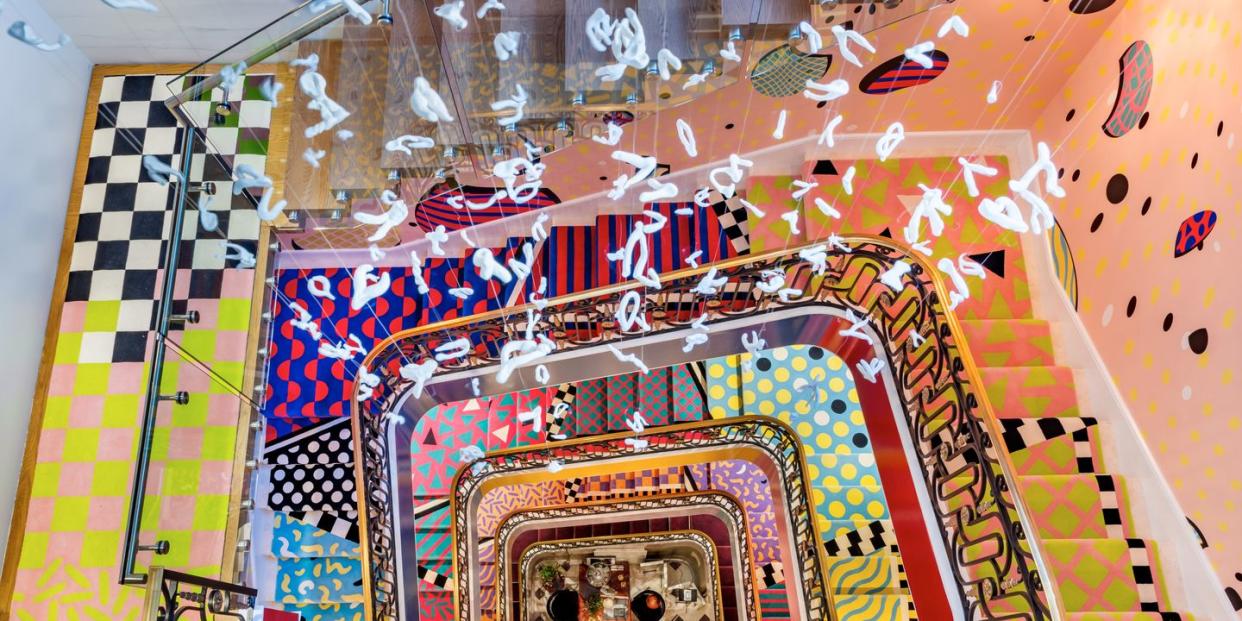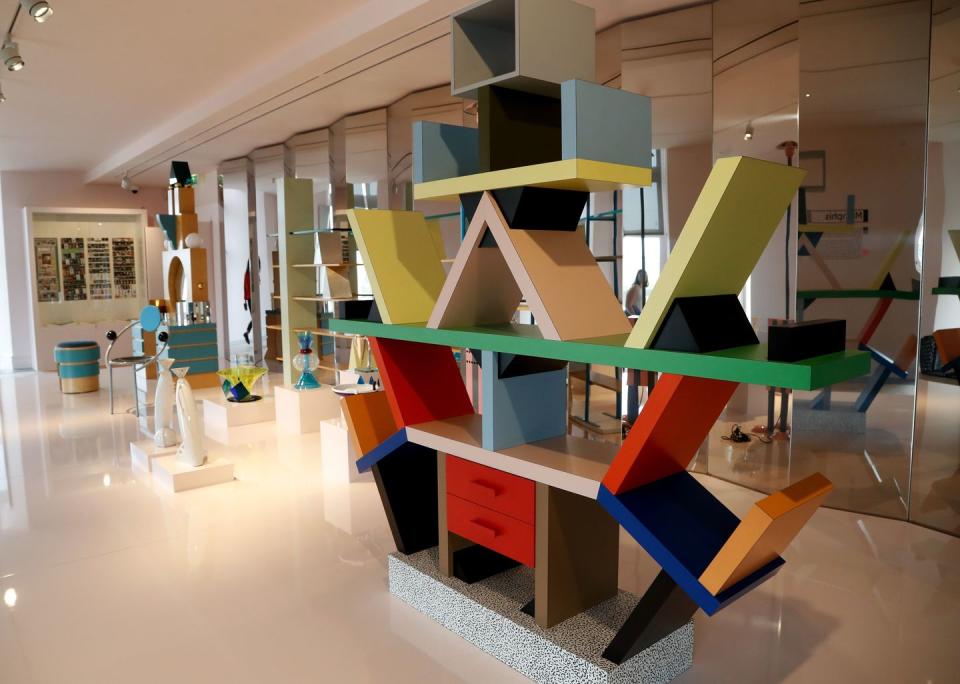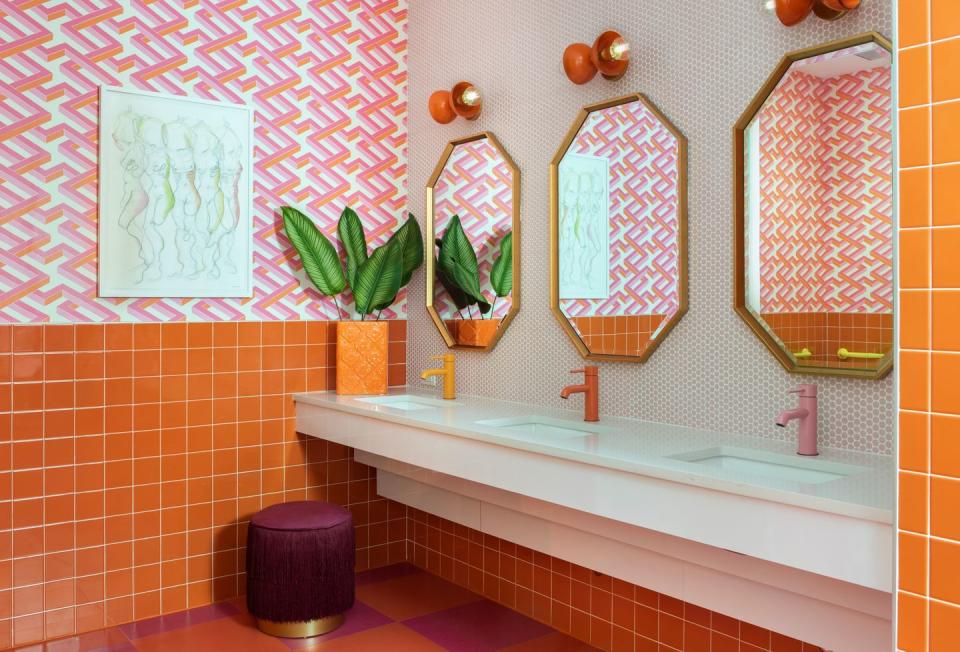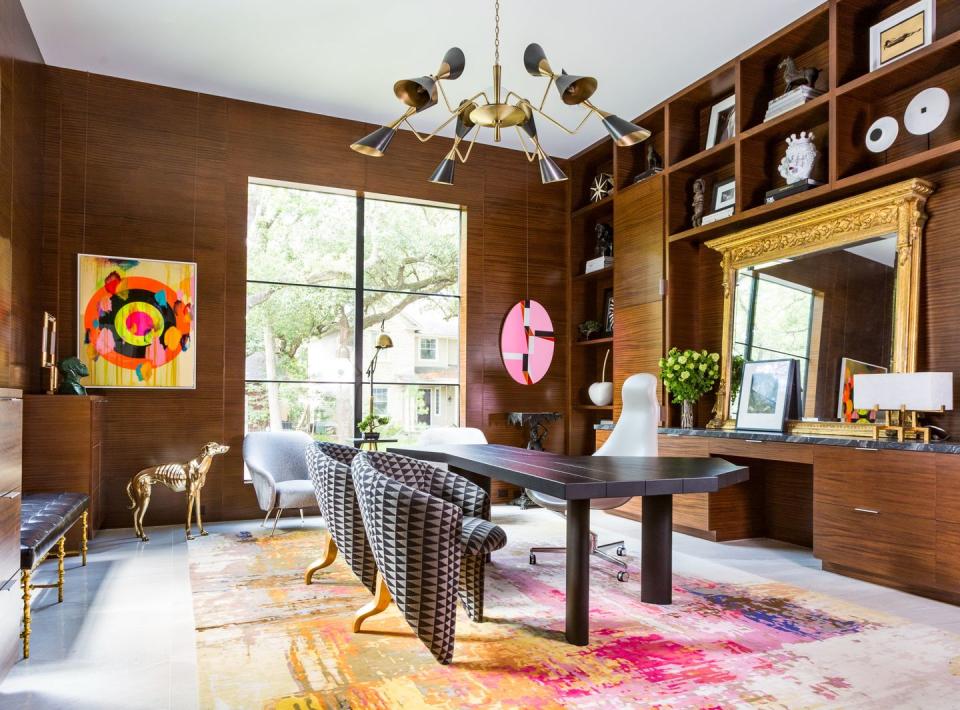Here's Why Memphis Design Is All Over Your Instagram Feed

“Hearst Magazines and Verizon Media may earn commission or revenue on some items through the links below.”
It was the staircase seen around the world: Sasha Bikoff’s spectacularly maximalist creation for the 2018 Kips Bay Show House in New York had design lovers near and far enamored when her colorful masterpiece was unveiled at one of the world’s most prestigious show houses. The inspiration? Memphis design, a movement that began in the 1980s, in Italy, and is best known for its inclusion of vibrant colors and geometric elements. (Think the interiors of Pee-wee's Playhouse and countless furnishings and design elements from the 80s and 90s.)
Italian architect Ettore Sottsass—who created the Ultrafragola mirror, an iconic piece of decor that sells for tens of thousands of dollars to this day and was even part of Bikoff’s show house design—is credited as the founder of the Memphis style, following his formation of the Memphis Group, an assemblage of designers and architects who would meet occasionally to discuss the future of the design world. They sought to switch the industry’s focus away from Modernism, arguably the most popular kind of design at that point in time—and they did just that, by creating and pioneering the Memphis design movement.

The phrase ‘Memphis design’ came from the Bob Dylan song “Stuck Inside of Mobile with the Memphis Blues Again,” which was continuously playing in the background during the group’s first meeting. The designers also liked that the name referenced multiple locations (like the city in Tennessee and the capital of ancient Egypt); they felt that that this spoke to the numerous ways in which the style can take shape: in the form of textiles, furniture, objects, and more.
Bikoff is far from the only designer who is continuing the legacy of Memphis design today. To create a commercial co-working enclave known as the “SheSpace,” Courtnay Tartt Elias of Creative Tonic Design collaborated with the two owners of a Houston, Texas-based female-run company—and the result is a “whimsical, fun, and bright” workplace that was meant to be “disruptive to the status quo.” This includes numerous shades of a vibrant tangerine, which can be seen in the space’s retro kitchen, on numerous bookshelves, and even in an unlikely spot: the bathroom, wherein a geometric orange-and-pink wallpaper by Schumacher graces the walls—a reference to the 1980s design elements that this movement is known for.

Tartt Elias is such a fan of the Memphis design movement that she has even decorated her own dwelling with elements specific to this style. “In my own home, I've incorporated Memphis design just about everywhere!” She adds, “You'll often see hints of—or outright homages to!—Memphis design in the wardrobes, bookcases, millwork and patterns I design for myself and my clients.”
So what is it that's so captivating about the style? Designer Benjamin Johnston tells House Beautiful that when it comes to decorating contemporary homes, he likes to use “pieces of Memphis design as a way to imbue the space with an intriguing sense of character.” For an at-home library-slash-office, Johnston “layered some unique vintage Memphis-style tripod chairs with a colorful complementary hand-woven rug from Stark Carpet.”
The designer adds that “these two key pieces, coupled with layered artwork and accessories, transformed an otherwise serious library into a space where the homeowners don't mind working from home.” Another item in this space that further adds to the Memphis aesthetic is a circular piece of art by Aaron Parazette, which features a geometric colorblock design—in bubblegum pink, no less.
After a trying year that left many homebound, it may come as little surprise, then, that a style that's unabashedly bold, colorful, and unserious would see a pique in interest.

Of course, the influence of Memphis design can be seen not only in houses galore, but also in home decor stores. Johnston declares, “You are just as likely to see the Memphis influence used on a piece at CB2 as you are to see it in a piece at an ultra-luxury showroom like EJ Victor or Jean de Merry.” In fact, you can currently find Memphis-inspired furnishings everywhere from Society6 to Wayfair to Sotheby’s.
Clearly, Memphis design’s influence is still palpable today, more than 40 years since its creation, and it shows no signs of going out of style. As Bikoff declares, “Memphis design will always be in fashion—you can make it work in any interior because the furnishings are sculptural art.”
Follow House Beautiful on Instagram.
You Might Also Like

